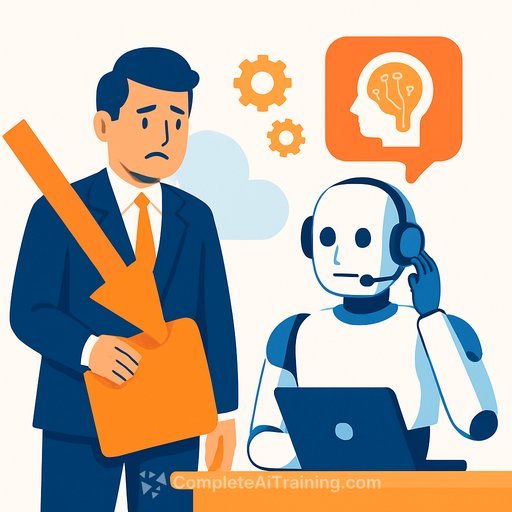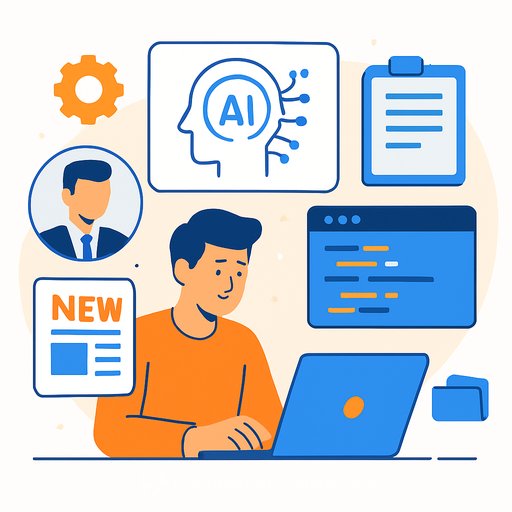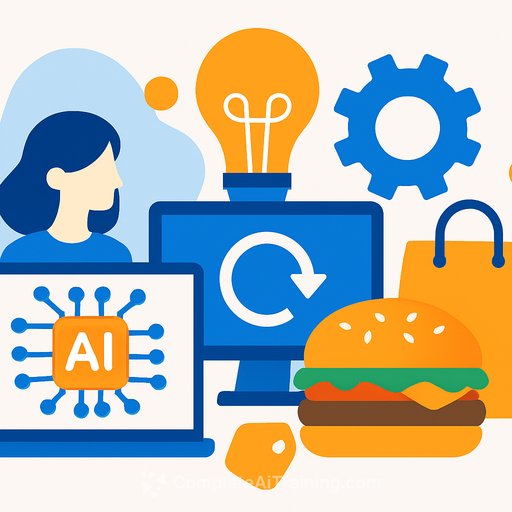Meta Trims AI Teams to Speed Product Decisions: What Product Leaders Should Do Next
Artificial intelligence is reshaping how teams build, review, and ship. Meta just made that clear by cutting 600 roles tied to Instagram's AI efforts, including around 100 positions in its risk review unit based in London. The stated goal: fewer bottlenecks, faster calls, and tighter product cycles.
Internal messaging at the company emphasized a simple idea: smaller teams argue less and ship more. That comes with a trade-off-automation will replace many manual reviews to keep privacy and compliance on track without slowing down development.
What Changed Inside Meta
Roughly 600 roles were eliminated in Instagram's AI group. The risk review unit, formed after Facebook's 2019 agreement with the FTC, was hit particularly hard with over 100 dismissals. That team reviewed new products for privacy risks and compliance obligations.
Meta says it will lean into automated systems to handle a larger share of compliance checks. According to Chief Privacy Officer Michel Protti, automation can improve accuracy and reliability while meeting regulatory requirements. The company frames this as a maturation of its programs and a way to accelerate product development.
Context: Privacy, Compliance, and the FTC
The risk review function originally expanded after the FTC's 2019 action against Facebook, which included a $5 billion penalty and stricter privacy oversight. That history explains why this shift concerns some employees who question whether automation alone can handle sensitive edge cases.
To date, Meta had already automated low-risk updates with human spot checks, while high-risk items remained human-reviewed. The new structure suggests a larger role for automation across the review funnel.
For background on the 2019 requirements, see the FTC announcement: FTC press release on Facebook's 2019 settlement.
Why This Matters for Product Development
The signal is clear: decision latency is a competitive tax. Automation can reduce cycle time, but only if you install guardrails that keep privacy, accuracy, and accountability intact. The teams that get this right will ship faster without rework or regulatory drag.
Practical Takeaways for Product Teams
- Define risk tiers upfront: Low, medium, high. Automate triage for low-risk. Keep high-risk human-in-the-loop.
- Set explicit thresholds: What qualifies as "low-risk"? Codify it. Don't rely on gut feeling across teams.
- Automate coverage, not judgment: Use automation to collect evidence, flag anomalies, and pre-fill checklists. Reserve complex trade-offs for humans.
- Standardize privacy-by-design: Mandate lightweight checklists in spec reviews and PR templates. Make compliance part of the path to green.
- Create decision SLAs: Give product, legal, and privacy teams clear timelines. Escalate or auto-approve low-risk after timeout with audit logging.
- Own your audit trail: Log what was reviewed, by whom or by which system, with model versions and data sources.
- Instrument the funnel: Track cycle time, rework rate, and incident frequency by risk tier. Optimize where the time actually goes.
- Establish RACI for risk: Who is responsible for final calls at each tier? Avoid ambiguous ownership during crunch time.
- Plan for model drift: Schedule periodic validation of automated checks. Recalibrate thresholds as products and risks evolve.
- People still matter: Preserve specialist expertise for complex reviews and post-incident analysis. Don't lose your safety net.
Questions to Pressure-Test Your Roadmap
- Which review steps block us most, and which can be automated without increasing risk?
- What's our fallback when automation is uncertain or data quality is poor?
- Do we have clear escalation paths for medium/high-risk features with time-based SLAs?
- How do we measure the impact of automation on incident rate and rework, not just speed?
- Where do we need human sign-off by policy, contract, or regulation?
- Are our logs, artifacts, and approvals audit-ready for regulators and partners?
30-Day Action Plan
- Map your current review flow. Label each step low/medium/high risk and note the average time to approve.
- Pilot automated triage for the lowest-risk 20% of changes with human spot checks.
- Add mandatory privacy checkpoints to design docs and pull requests, tied to risk tier.
- Implement basic audit logging for every automated decision, including model and rules versions.
- Run a tabletop exercise: simulate a privacy incident and trace your evidence trail end-to-end.
- Upskill the team on AI-assisted review and prompt discipline for repeatable checks. If useful, explore role-based training paths here: Complete AI Training - Courses by Job.
The Bigger Arc
Meta's move is part of a broader shift: smaller, faster teams augmented by automation, with experts reserved for high-impact decisions. That's the model many product orgs are converging on as they try to ship faster without taking on hidden risk.
The playbook is simple, but it requires discipline. Automate the predictable. Keep humans on the hard stuff. Measure everything. And make sure your logs can defend your decisions when it counts.
Your membership also unlocks:






